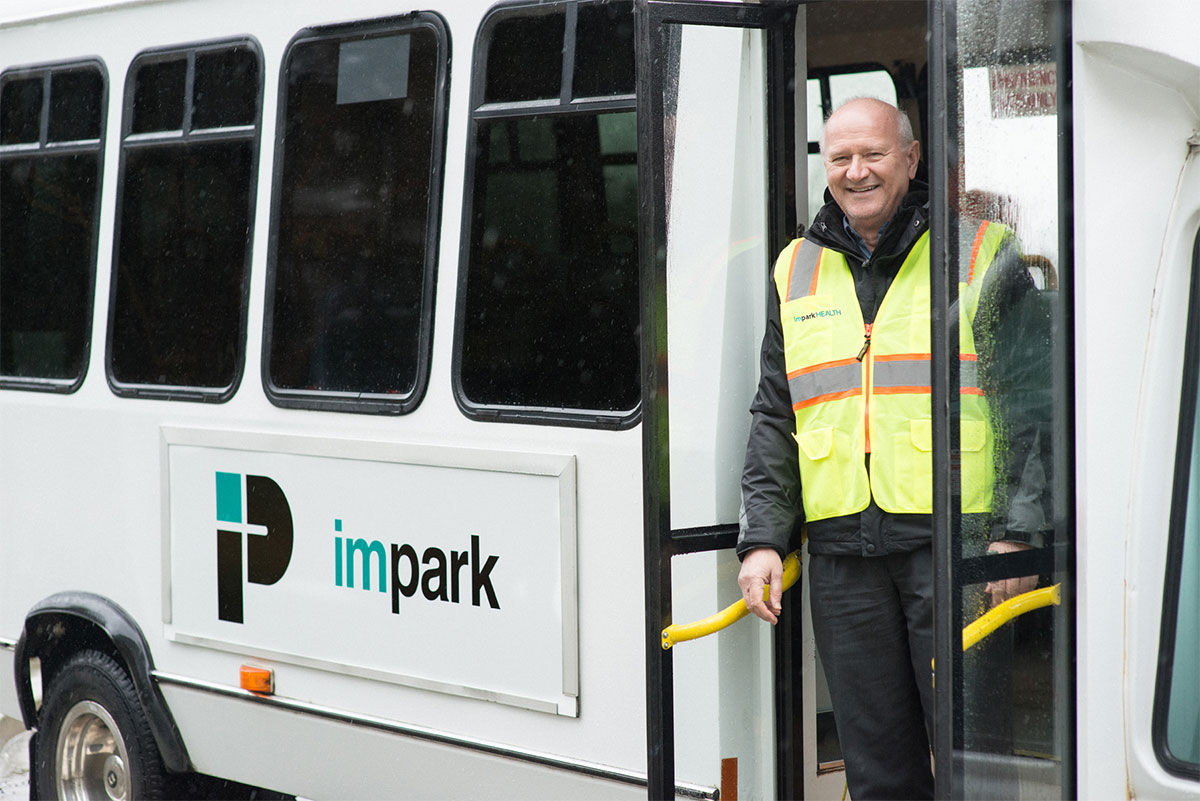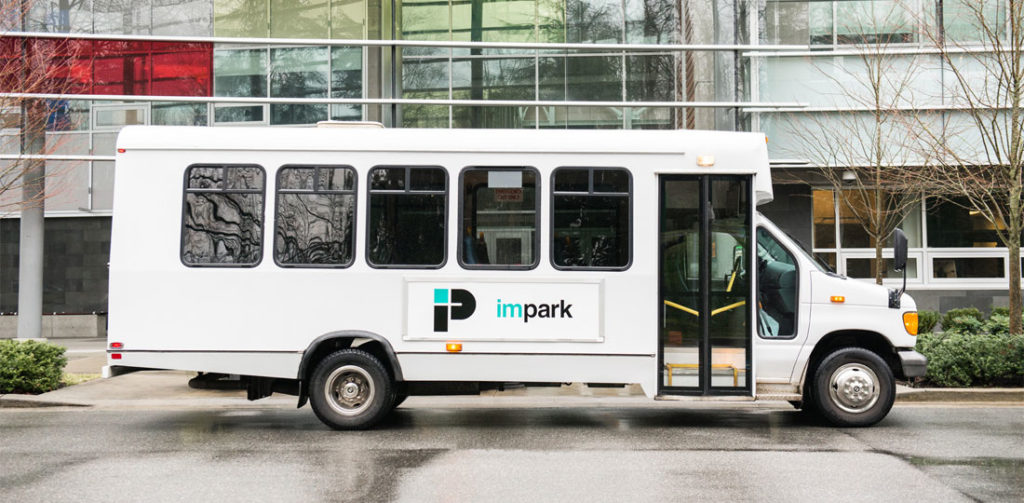By Mark Williams | 3.5 min. read
Why Introduce a Shuttle Service To Your Hospital?
Well-developed shuttle services can address a number of healthcare campus hitches.
Some move employees and volunteers from remote parking lots to hospital grounds, increasing on-site parking capacity for patients and visitors. Others help improve patient and visitor accessibility on sprawling campuses or aim to indiscriminately reduce single-occupant vehicle usage as part of a transportation demand management plan.
But no matter what the objective, one thing’s for sure — planning is key.
Use these seven considerations to guide you through sourcing a healthcare-friendly shuttle fleet for your facility.
1. How Many Passengers Need to Be Transported at Once?
 When calculating your shuttles’ ideal passenger capacity, be sure to add a cushion for peak periods. Further, be aware that the number of seats your shuttles have will impact the type of driver’s license needed to operate the vehicle, which could shrink your talent pool.
When calculating your shuttles’ ideal passenger capacity, be sure to add a cushion for peak periods. Further, be aware that the number of seats your shuttles have will impact the type of driver’s license needed to operate the vehicle, which could shrink your talent pool.
2. What Type of Shuttle Bus Will You Source?
Once ideal capacity is determined, the type of shuttle bus needed can be narrowed down. For smaller organizations, a minibus may suffice. Larger healthcare campuses, however, may require shuttles more akin to a neighborhood bus.
3. Will You Purchase New or Second-Hand Shuttles?
Depending on the budget and scope of your shuttle project, a second-hand fleet may represent the best return on investment.
Decommissioned transit buses and unwanted private vehicles all provide an opportunity to save money and quicken procurement. However, if embarking on a pre-loved purchase, ensure the particulars are reviewed by a seasoned professional, such as an Impark HEALTH consultant. Though aesthetics such as paint and flooring can be refined, features such as age, mileage, seating capacity, and heating/cooling capabilities cannot.
4. What Are the Fleet’s Fuel Requirements?
Gas, diesel, hybrid, and electric shuttle vehicles each have their distinct benefits and drawbacks. Diesel shuttles, for example, offer greater fuel economy than gas shuttles but may incur larger maintenance fees due to their technologically complex engines.
Pursuing a green fleet is a means of contributing to environmental sustainability and demonstrating corporate responsibility. However, it does require additional operational considerations. Electric buses, for example, will need to be supported by dedicated electric vehicle (EV) charging stations — an infrastructure demand not all campuses can support. An Impark HEALTH advisor can guide you through the practicalities of an EV fleet, along with any government incentives available to you for embarking on such a project.
5. Will Shuttles Serve Passengers With Wheelchairs?
 If shuttles are intended to transport passengers in wheelchairs, consider how many should be accommodated at one time based on thorough research and co-design exercises. Then, plan how vehicles should be modified for the safety, comfort, and convenience of all passengers.
If shuttles are intended to transport passengers in wheelchairs, consider how many should be accommodated at one time based on thorough research and co-design exercises. Then, plan how vehicles should be modified for the safety, comfort, and convenience of all passengers.
If shuttles are not intended to transport passengers in wheelchairs, carefully plan the alternatives you will be offering them. Impark HEALTH provisions that may fit the bill include a separate on-call shuttle service, a subsidized ride-hailing plan, and a complimentary valet service at key entrances for private vehicles.
6. Will Passengers Be Able to Track Your Shuttles?
GPS trackers — and some webcams — allow passengers to track shuttles via Impark HEALTH’s site-specific mobile apps, showing them the exact location of their next shuttle and an accurate arrival time.
Beyond providing passengers with a transparent and convenient service, tracking offers key reporting data, allowing you to incrementally improve the service.
7. Have You Considered Your Shuttles’ Branding?
Branded shuttles positively raise your institution’s profile and showcase your commitment to patient care. In addition, well-branded vehicles provide passengers with the comfort and security of knowing they’re boarding official vehicles provided by their healthcare institution.
Next Steps
These points by no means amount to an exhaustive list of shuttle requirements and considerations. As such, we strongly recommend enlisting the help of a professional to get your shuttle project moving.
Impark HEALTH has the breadth of skills and experience needed to help you launch pilot projects and expand, refine, and evaluate current patient transition zone services. From the complexities of inter- and intra-campus routing to providing capital to procure a fleet — and every stop in between — Impark HEALTH can help.
About Impark HEALTH
Impark HEALTH, a subdivision of Impark, provides patient-centered parking, transportation, and wayfinding solutions to healthcare providers across North America. Our patient transition zone expertise, intensive healthcare-specific training, and commitment to excellence have led us to partner with top hospitals across the United States and Canada. Currently, Impark HEALTH bookends more than 15 million patient experiences every year at over 220 healthcare locations.
Let’s see how we can help you. Contact an Impark HEALTH specialist today.
Mark Williams is director of strategic accounts at Impark HEALTH. Email him at markwilliams@impark.com.




